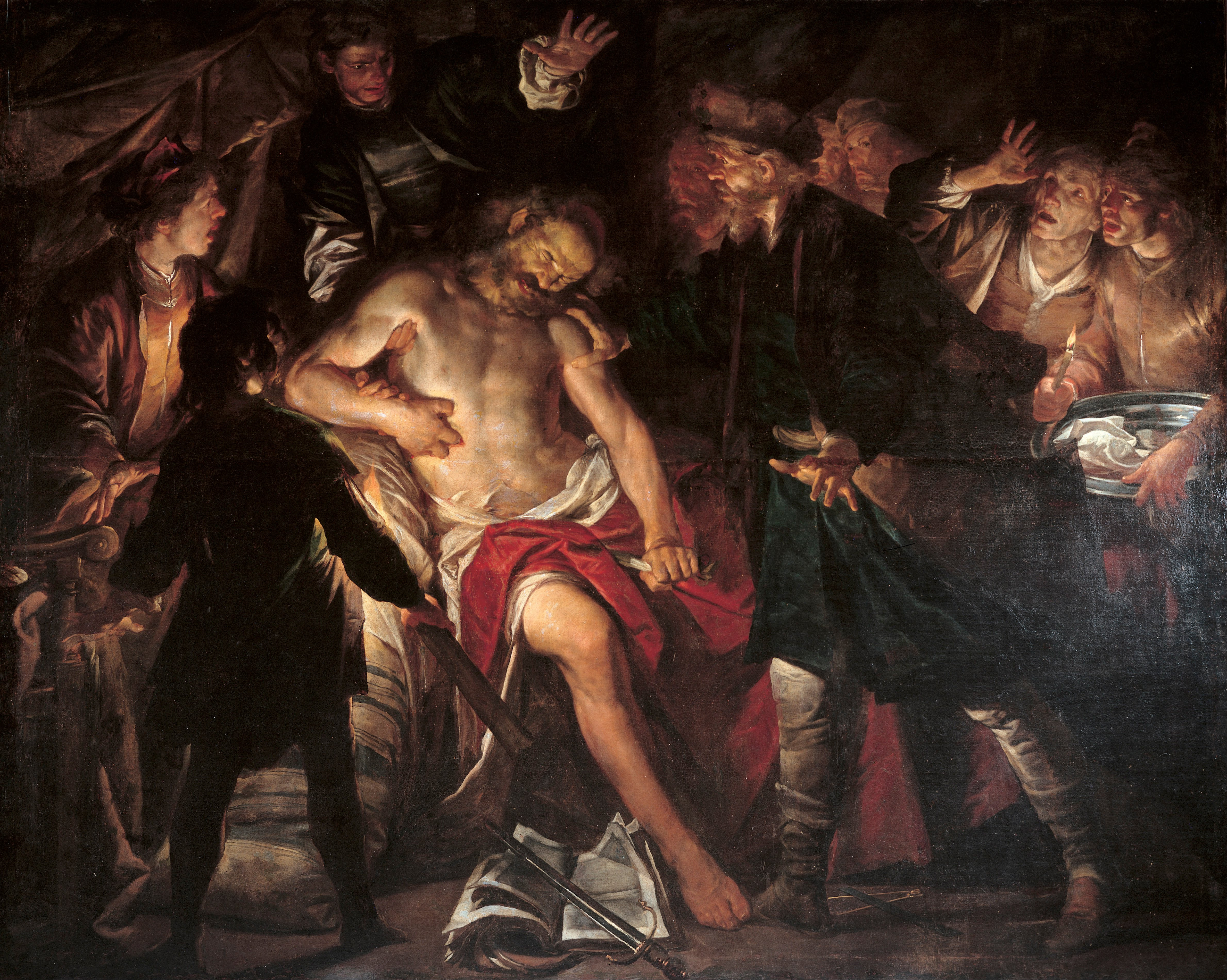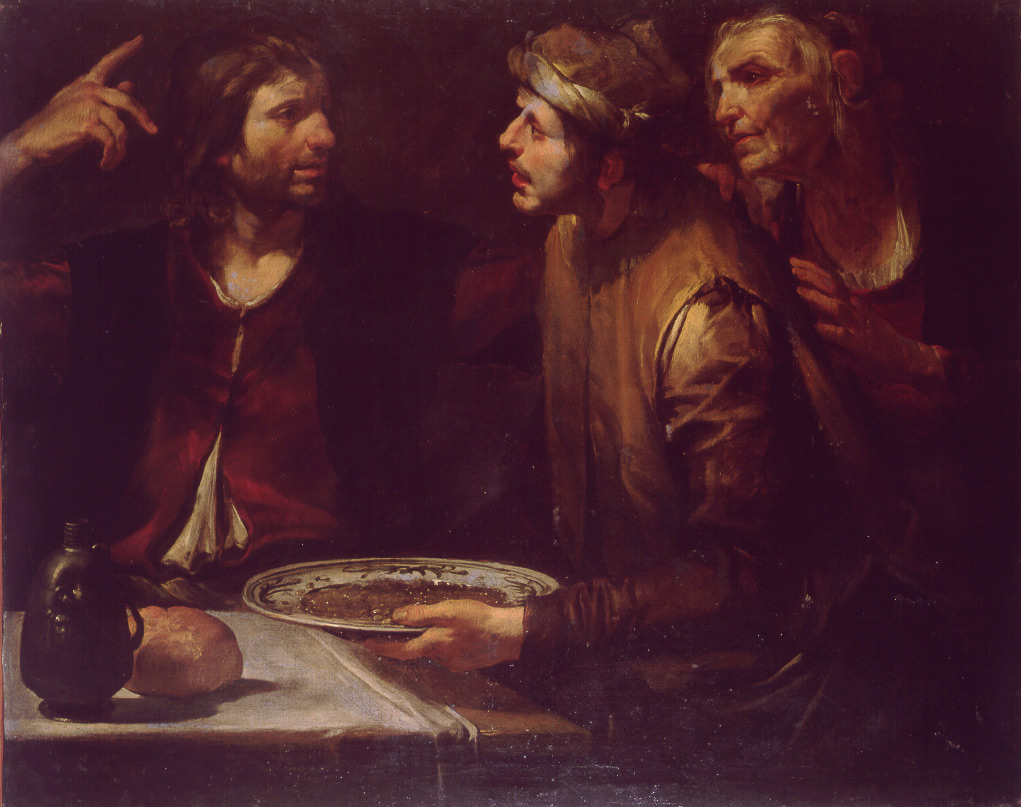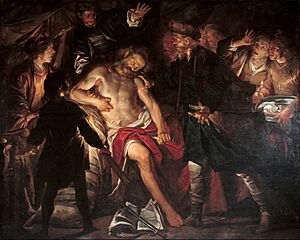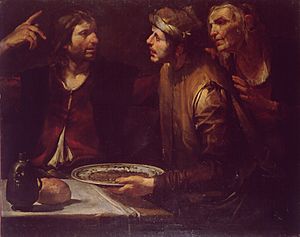Gioacchino Assereto facts for kids
Gioacchino Assereto (born 1600, died June 28, 1649) was an Italian painter. He was a very important artist during the early Baroque period. He was known for his history paintings in Genoa, Italy, in the 1600s.
Life of Gioacchino Assereto
Gioacchino Assereto started learning to paint at age 12. His first teacher was Luciano Borzone. Around 1614, he joined the studio of Giovanni Andrea Ansaldo.
He worked mostly in Genoa. In 1639, Assereto traveled to Rome. There, he visited many artists' studios. He probably met other Genoese artists working in Rome. These included Luca Saltarello and Giovanni Benedetto Castiglione. His time in Rome was important. It helped him discover the new realistic style of painters like Caravaggio.
In the 1640s, Assereto also painted frescoes. Frescoes are paintings done on wet plaster walls. He was very successful in Genoa. Later in his life, many copies of his work were made. Some were even painted by his son, Giuseppe Assereto. A writer from his time, Raffaele Soprani, praised Assereto's work greatly.
Gioacchino Assereto's Artworks
Most of Assereto's paintings show religious stories or historical events. He also painted some portraits of people. When he was a student, he created many works in the Baroque style. He used strong drama and emotion in his paintings. He did this using techniques like chiaroscuro and sfumato. Chiaroscuro uses strong contrasts between light and dark. Sfumato creates soft, hazy outlines.
He kept improving his style in his twenties and thirties. His visit to Rome in 1639 showed him a new interest in realism. This encouraged him to paint very detailed heads and hands. It also showed him how to use light and shadow instead of bright colors.
In 1640, Assereto painted  . This powerful painting uses a dark background. It has intense shadows that make Christ's body seem to glow. Another painting showing this style is
. This powerful painting uses a dark background. It has intense shadows that make Christ's body seem to glow. Another painting showing this style is  . In this work, Assereto moved from bright colors to a bolder style. He used dramatic effects like flaming torches. These emphasized strong emotions. This painting also shows the influence of northern artists like Gerrit van Honthorst.
. In this work, Assereto moved from bright colors to a bolder style. He used dramatic effects like flaming torches. These emphasized strong emotions. This painting also shows the influence of northern artists like Gerrit van Honthorst.
In the 1640s, he studied the works of Peter Paul Rubens and Anthony van Dyck. Because of this, his paintings became more lively. He also added more emotion to his art. He used lights and colors that showed he knew about the Venetian style of painting. His  (from the 1640s) shows the influence of Van Dyck.
(from the 1640s) shows the influence of Van Dyck.
His later works often show figures from the waist up. They have a simple, realistic feel. There is a gentle emotional connection between the people in the paintings. These works have been compared to those by Diego Velázquez. An example is  (around 1645).
(around 1645).
Gioacchino Assereto also painted frescoes. In the 1640s, he painted for the Palazzo Granello. He also created works for the Sant'Agostino church. Only parts of these frescoes still exist today.
See also
 In Spanish: Gioacchino Assereto para niños
In Spanish: Gioacchino Assereto para niños




